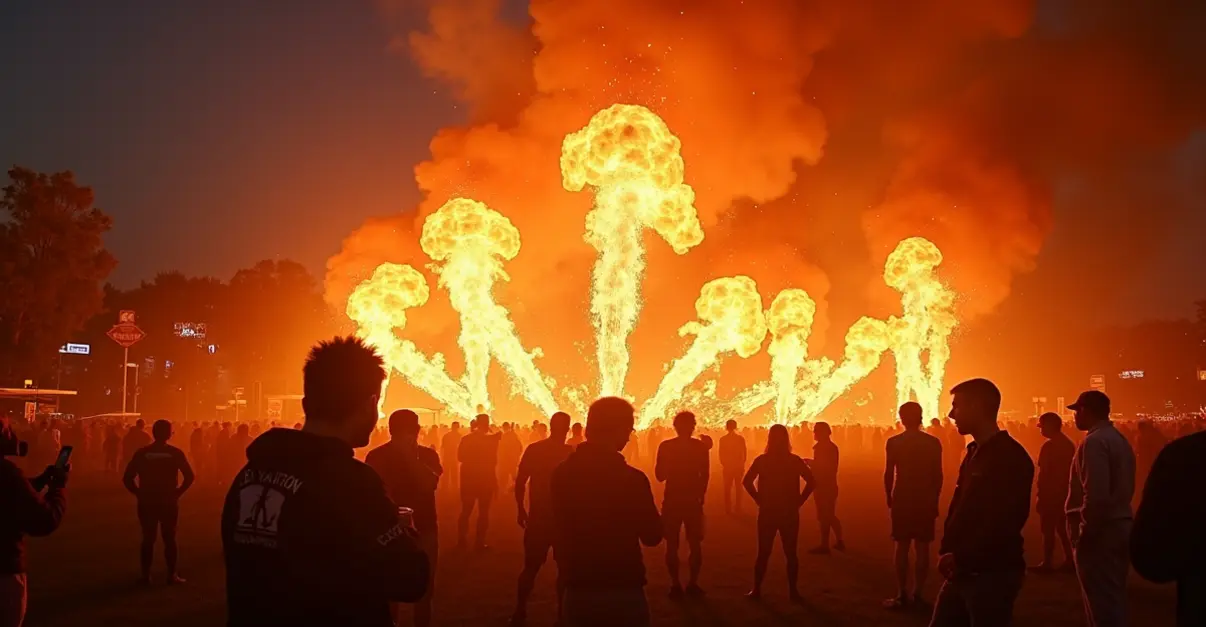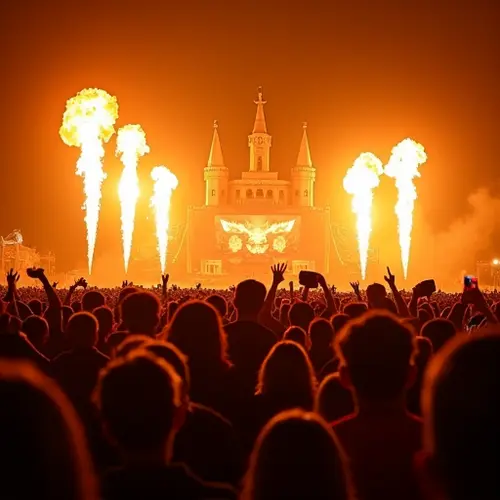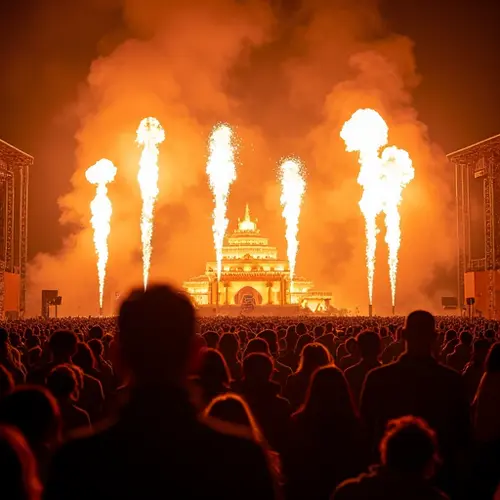Tomorrowland's main stage fire started during pyrotechnic testing with fire bowls containing flammable substances and strontium nitrate. The blaze caused 60 million euros in damages but was rebuilt within 48 hours.

Investigation Reveals Fire Bowl Testing Caused Main Stage Blaze
A devastating fire that completely destroyed the main stage at Tomorrowland, one of the world's largest electronic music festivals, originated during testing of large fire bowls containing highly flammable substances, according to an ongoing investigation. The blaze occurred on July 16, 2025, during preparations for the festival in Boom, Belgium, when technicians were conducting tests with at least four pyrotechnic bowls used for creating spectacular flame effects during performances.
Rapid Escalation and Complete Destruction
According to sources close to the investigation speaking to VRT News, the fire initially broke out in one of the fire bowls during testing. The flames quickly spread to the stage structure, which was largely constructed from polystyrene and wood materials, causing the entire main stage to be consumed by fire within minutes. 'The situation escalated incredibly fast,' said an anonymous source involved in the investigation. 'What started as a small fire in one bowl became an uncontrollable blaze within moments.'
The fire was further accelerated when stored fireworks near the main stage also ignited, creating a chain reaction that overwhelmed firefighting efforts. Despite immediate response from emergency services, the iconic main stage structure was completely destroyed, with estimated damages reaching approximately 60 million euros.
Chemical Composition and Safety Concerns
Investigators have revealed that the pyrotechnic bowls contained not only standard fuel but also strontium nitrate, a chemical compound commonly used in pyrotechnics to create vibrant red flame effects. Strontium nitrate is known to release oxygen when heated, acting as a fire accelerant that can dramatically increase combustion intensity.
'The presence of strontium compounds in the fire bowls significantly contributed to the rapid spread of the fire,' explained a pyrotechnics expert familiar with the investigation. 'When these materials heat up, they not only produce oxygen that feeds the fire but can also create extremely high temperatures that easily ignite surrounding materials.'
Festival's Remarkable Recovery
In an extraordinary display of resilience and organization, Tomorrowland managed to erect a completely new main stage within just 48 hours, allowing the festival to continue as scheduled. The replacement stage was constructed on the same location where the fire had occurred, demonstrating the festival organizers' commitment to delivering the experience that hundreds of thousands of attendees had traveled from around the world to enjoy.
'The speed at which they rebuilt was absolutely incredible,' said festival attendee Maria Rodriguez. 'One day we saw the stage in flames, and two days later we were dancing under a brand new one. It showed amazing dedication from the organizers.'
Ongoing Investigations and Future Implications
Both criminal and civil investigations are currently underway, examining multiple aspects of the incident. Authorities are particularly focused on determining whether the festival violated its permit conditions, which reportedly prohibited the storage of fireworks on site. The investigation is also examining the safety protocols surrounding pyrotechnic testing and whether proper precautions were in place during the testing phase.
'We need to understand exactly how this happened to prevent similar incidents in the future,' stated a spokesperson for the Belgian safety authorities. 'Large-scale events like Tomorrowland have a responsibility to ensure the highest safety standards, especially when dealing with pyrotechnics and flammable materials.'
The incident has raised important questions about safety protocols at major music festivals worldwide, particularly those incorporating elaborate pyrotechnic displays. Industry experts suggest that the findings from this investigation could lead to significant changes in how pyrotechnics are tested and managed at large-scale events.
Security camera footage has captured the initial moments of the fire, providing crucial evidence for investigators. However, determining liability and responsibility could take years, with over 30 parties potentially involved in the complex legal proceedings surrounding the estimated 60 million euros in damages.

 Nederlands
Nederlands
 English
English








